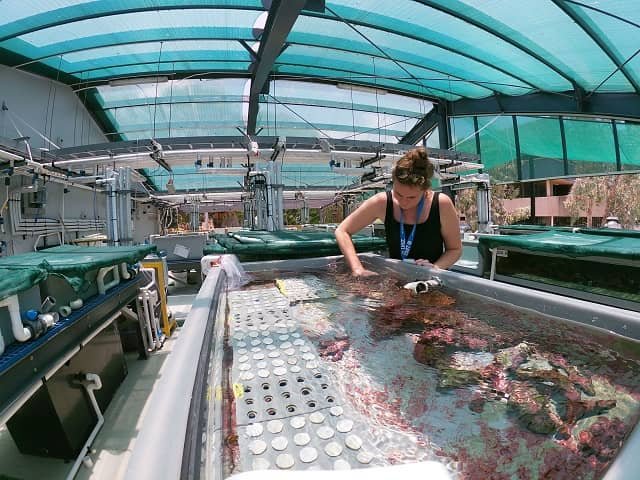In the quest for less toxic antifouling coatings for marine structures, natural antifoulants have emerged as promising alternatives. Among them, capsaicin, a compound found in chili peppers, has garnered significant attention due to its remarkable environmentally friendly properties and low impact on the ecosystem.
While the efficacy of capsaicin as an antifouling agent is well-established, controlling its release from coating matrices has been a persistent challenge.
In an effort to develop a sustainable and long-lasting antifouling solution, researchers from Leitat Technological Center and the Center for Nanotechnology Excellence (CEN) explored the integration of capsaicin with dichlofluanid in water-based acrylic coating formulations.
Strategies to Combat Biofouling
A widely used strategy to mitigate the impacts of biofouling, the attachment of marine organisms to surfaces, is the application of surface coatings containing biocides, with organotin-based coatings being the most effective. However, these anti-fouling agents were banned in 2008 due to their non-targeted toxicity and harmful effects on marine ecosystems.
Today, most commercial anti-fouling coatings used in aquaculture contain cuprous oxide as a biocide. Nevertheless, copper is also hazardous and has adverse effects on marine creatures.
Furthermore, accumulated copper sediments on the seabed significantly affect non-target organisms such as invertebrates and algae.
The Eco-Friendly Antifouling Solution
The research focuses on incorporating capsaicin and dichlofluanid into the same coating matrix, with the goal of creating an environmentally friendly antifouling system that offers prolonged activity.
To assess the effectiveness of the resulting coatings, the study examines the survival behavior of a Gram-negative marine bacterium, Aeromonas Salmonoid ATCC 33658, and measures the rate of capsaicin release from the paint matrix.
Stay Always Informed
Join our communities to instantly receive the most important news, reports, and analysis from the aquaculture industry.
Synergistic Antibacterial Performance
The findings of this study are truly remarkable. When 0.75% by weight of capsaicin and 0.75% by weight of dichlofluanid are combined in the same matrix, the resulting coatings exhibit exceptional antibacterial performance, with a reduction of up to 99.9% in colony-forming units (cfu). This antibacterial value is 2.5 to 3 times higher than that achieved using individual biocides at 1.5% by weight.
Unlocking the Power of Synergy
What makes this combination so potent? The study reveals that the association between capsaicin and dichlofluanid generates a synergistic effect on antifouling performance. This synergy not only enhances the coatings’ ability to repel marine organisms but also prolongs their antifouling activity.
A Greener Future for Marine Structures
The incorporation of capsaicin and dichlofluanid into water-based acrylic coatings represents a significant step towards greener and more effective antifouling solutions for marine structures. By harnessing the power of natural compounds and synergy, we are not only reducing the environmental impact of antifouling practices but also ensuring the long-term protection of our valuable marine assets.
Conclusion
In the pursuit of environmentally friendly antifouling coatings, capsaicin has emerged as a natural hero. When combined with dichlofluanid, it unleashes a powerful, synergistic force that outperforms traditional antifouling agents.
This innovative approach holds the promise of a greener and more sustainable future for marine structures, where protection goes hand in hand with environmental responsibility.
As we continue to explore the potential of natural compounds, we move closer to preserving our oceans while safeguarding the longevity of our maritime assets.
Reference (open access):
Beyazkilic, Z.; Faccini, M.; Escobar, A.M.; Bautista, L. Eco-Friendly Capsaicin-Containing Water-Based Antifouling Coatings for Marine Aquaculture. Coatings 2023, 13, 1616. https://doi.org/10.3390/coatings13091616
Editor at the digital magazine AquaHoy. He holds a degree in Aquaculture Biology from the National University of Santa (UNS) and a Master’s degree in Science and Innovation Management from the Polytechnic University of Valencia, with postgraduate diplomas in Business Innovation and Innovation Management. He possesses extensive experience in the aquaculture and fisheries sector, having led the Fisheries Innovation Unit of the National Program for Innovation in Fisheries and Aquaculture (PNIPA). He has served as a senior consultant in technology watch, an innovation project formulator and advisor, and a lecturer at UNS. He is a member of the Peruvian College of Biologists and was recognized by the World Aquaculture Society (WAS) in 2016 for his contribution to aquaculture.




